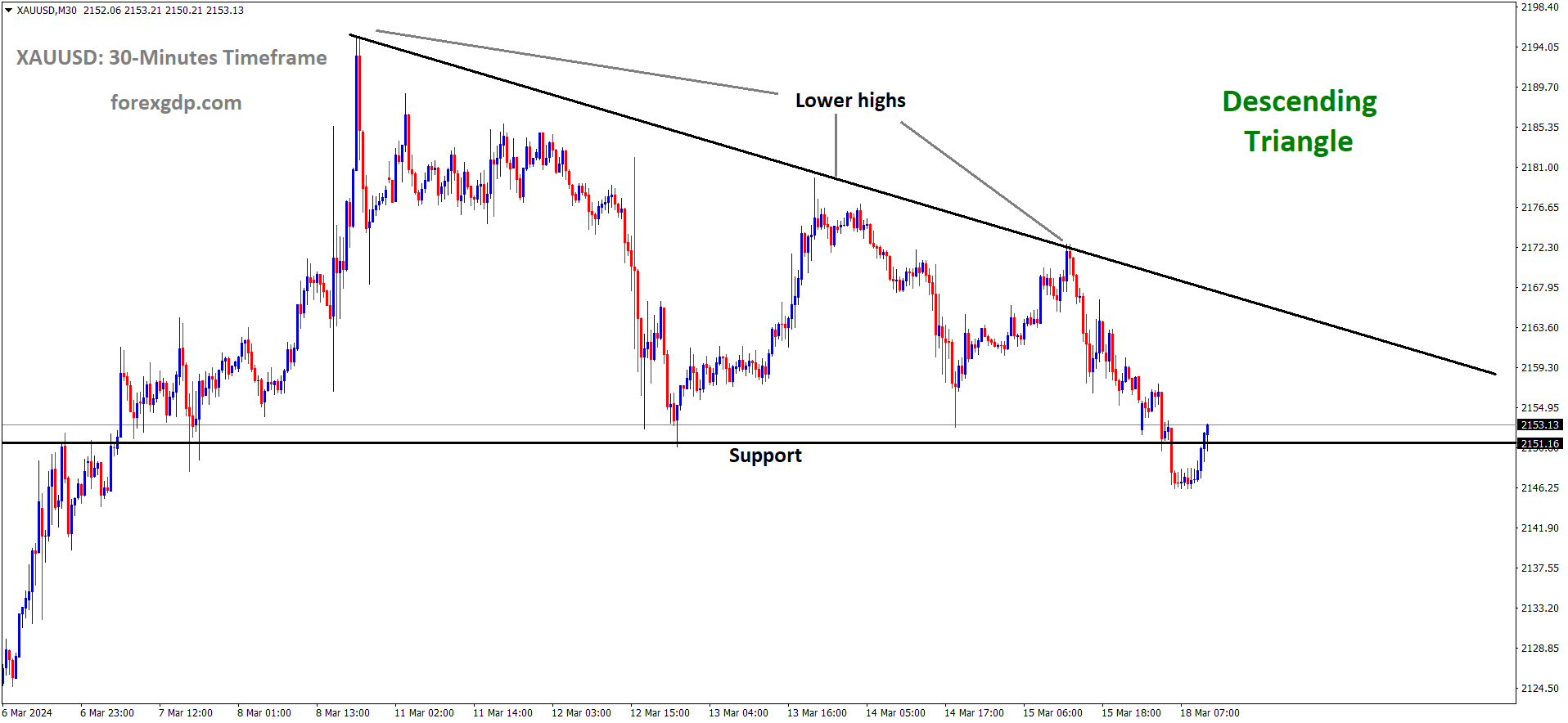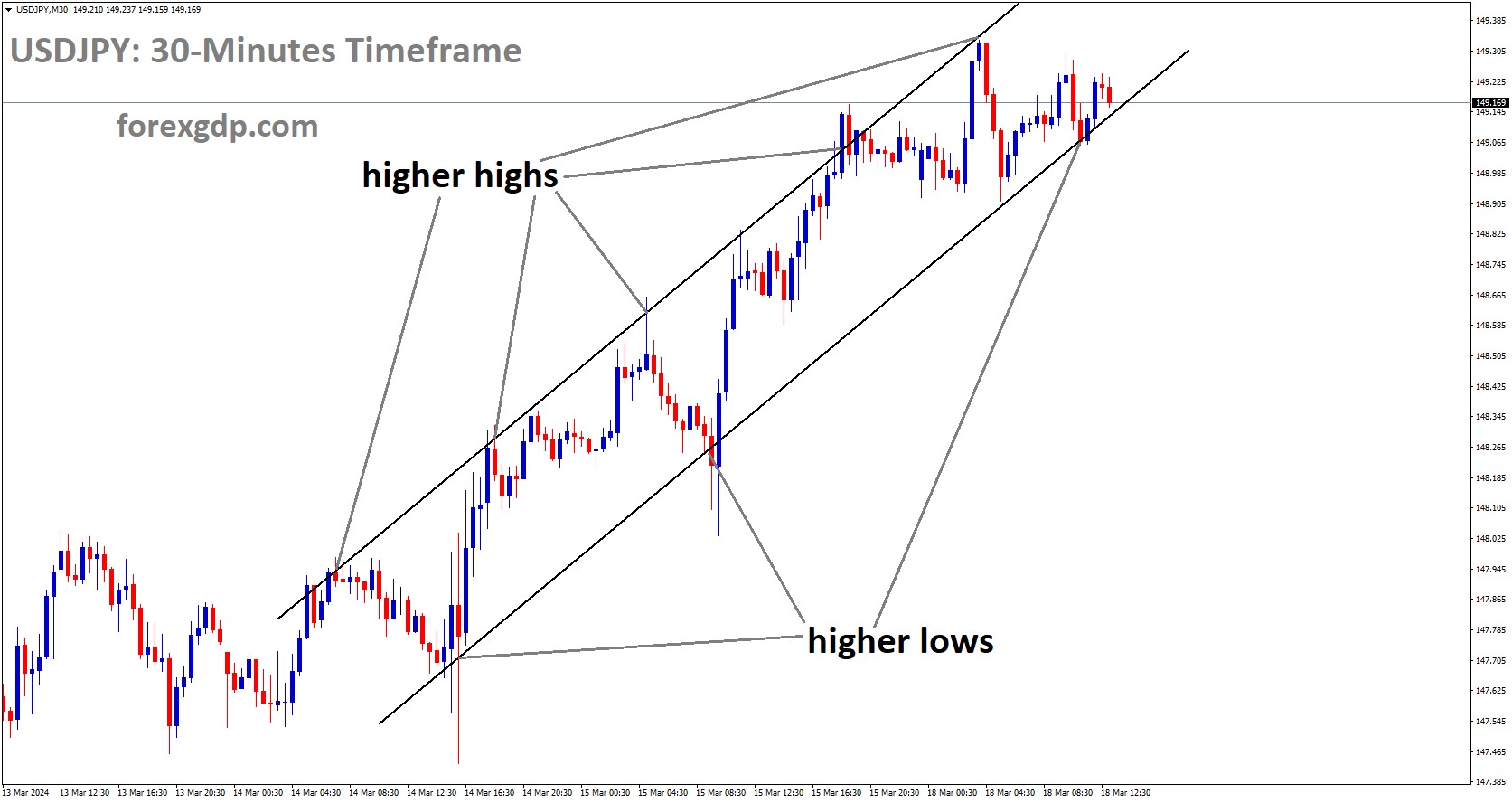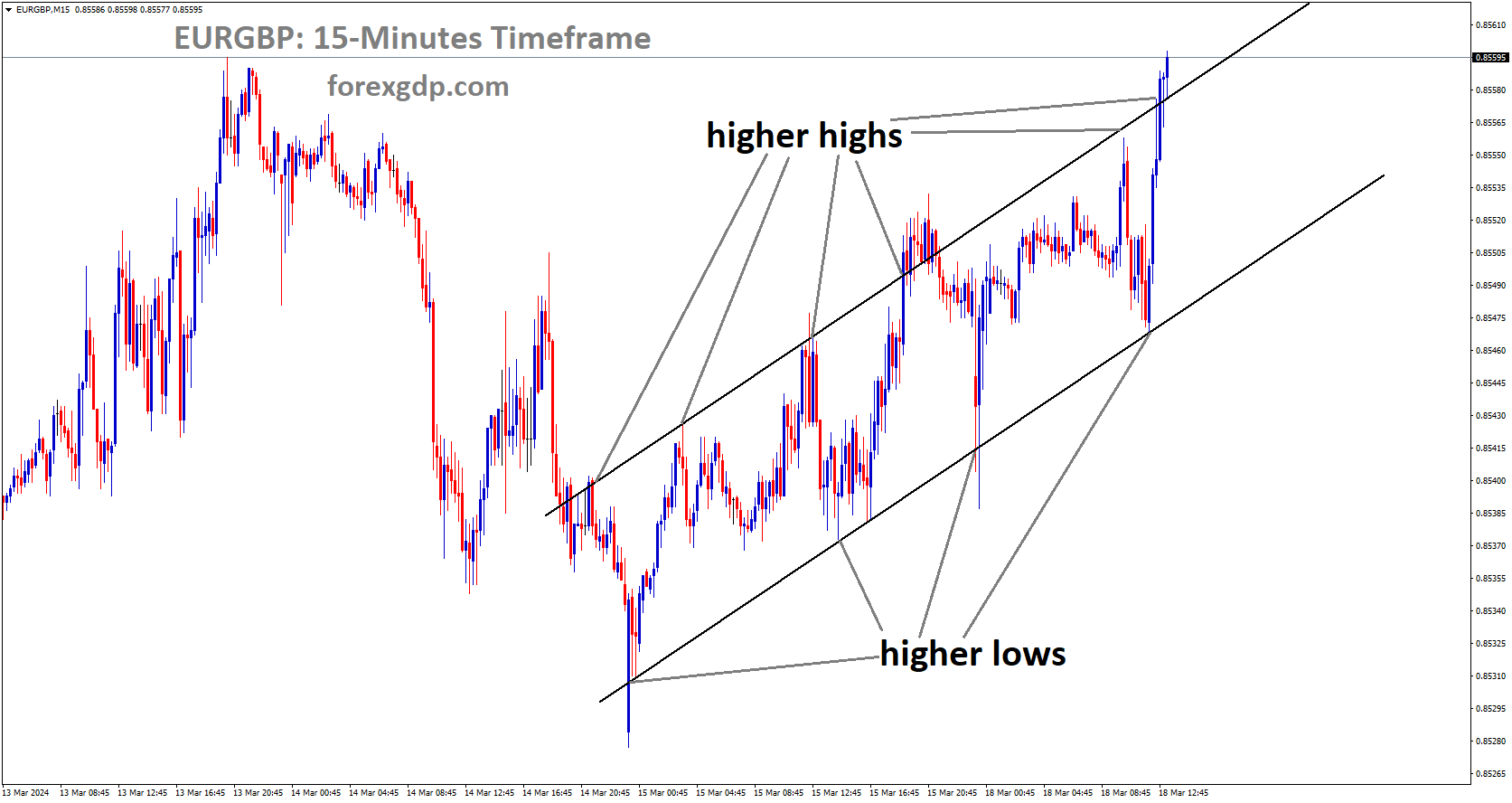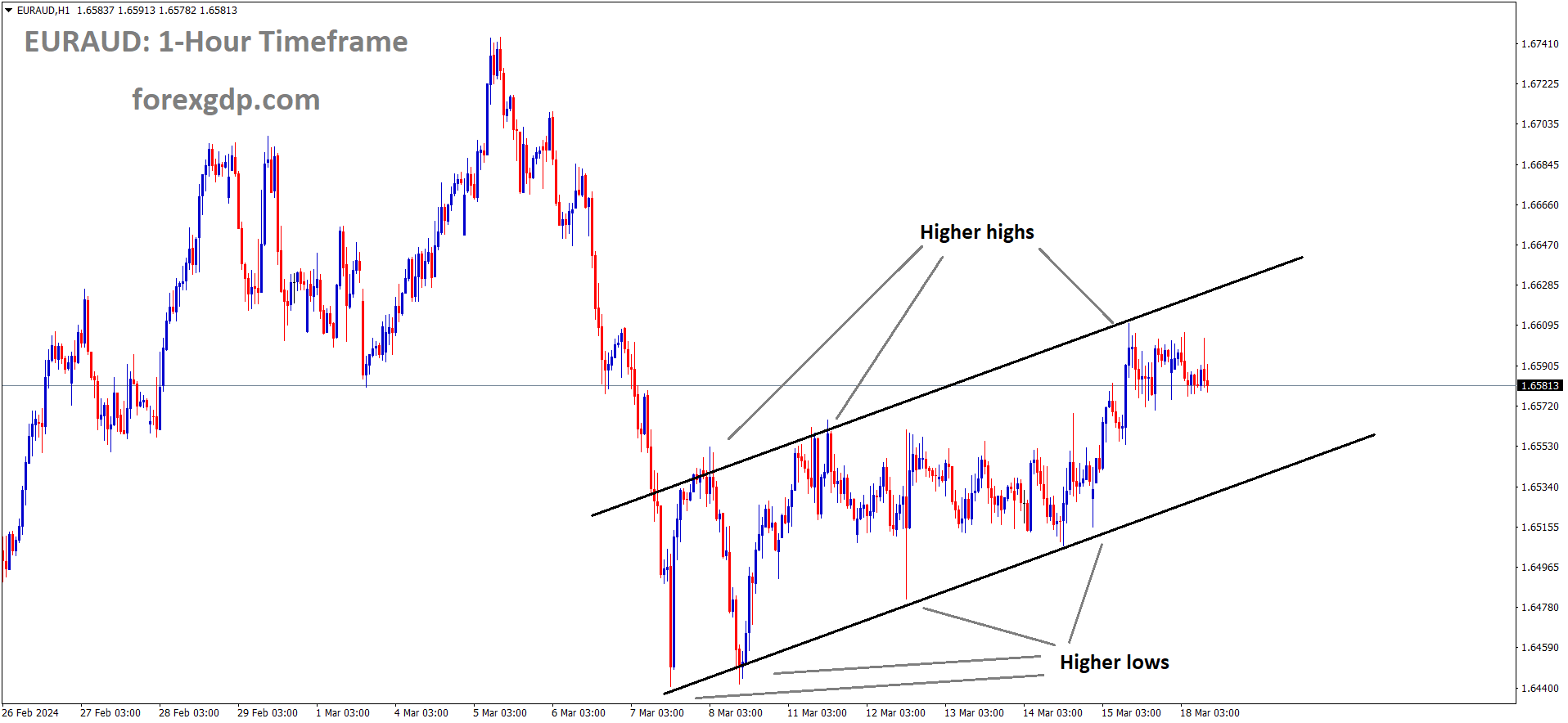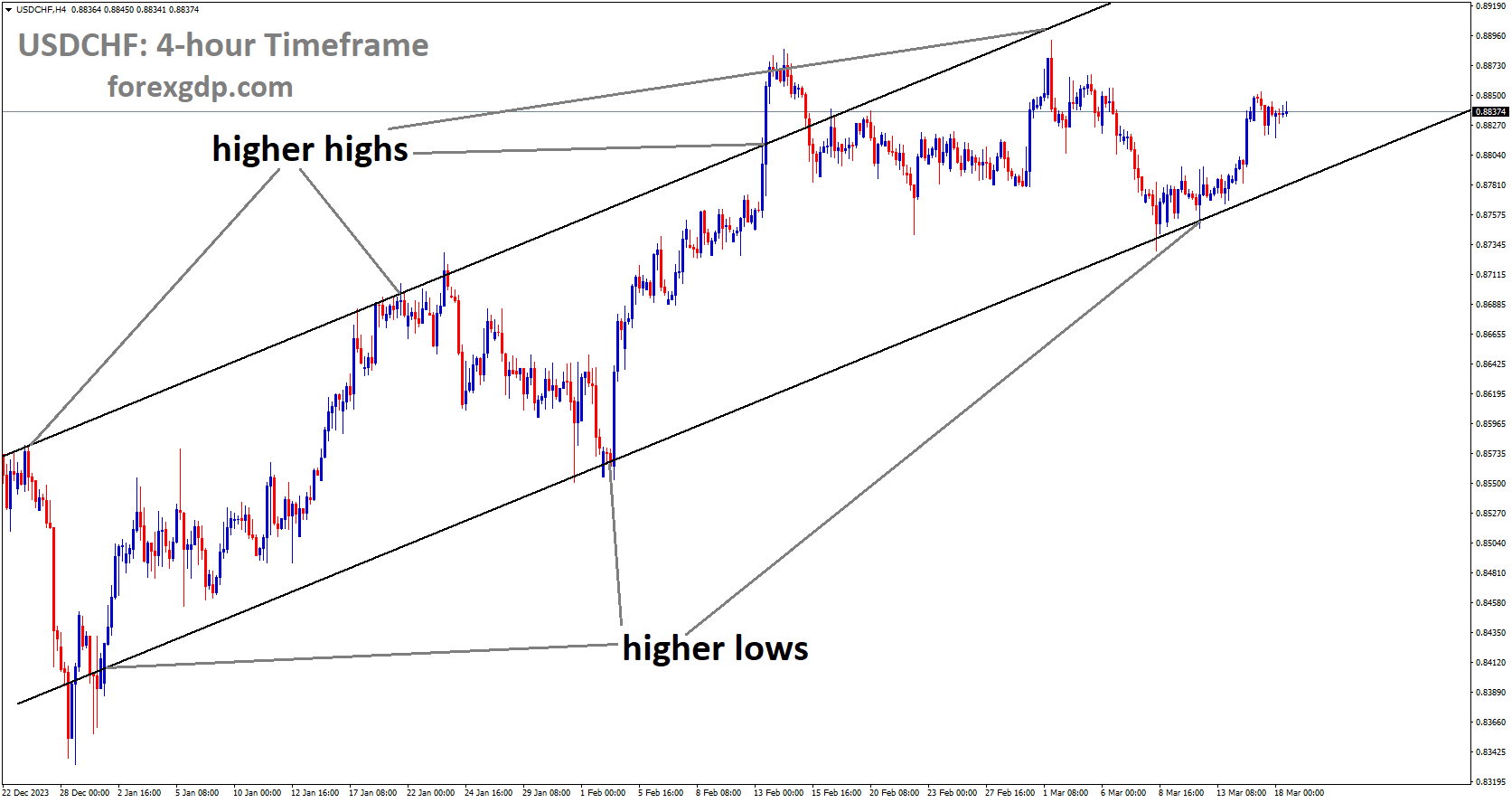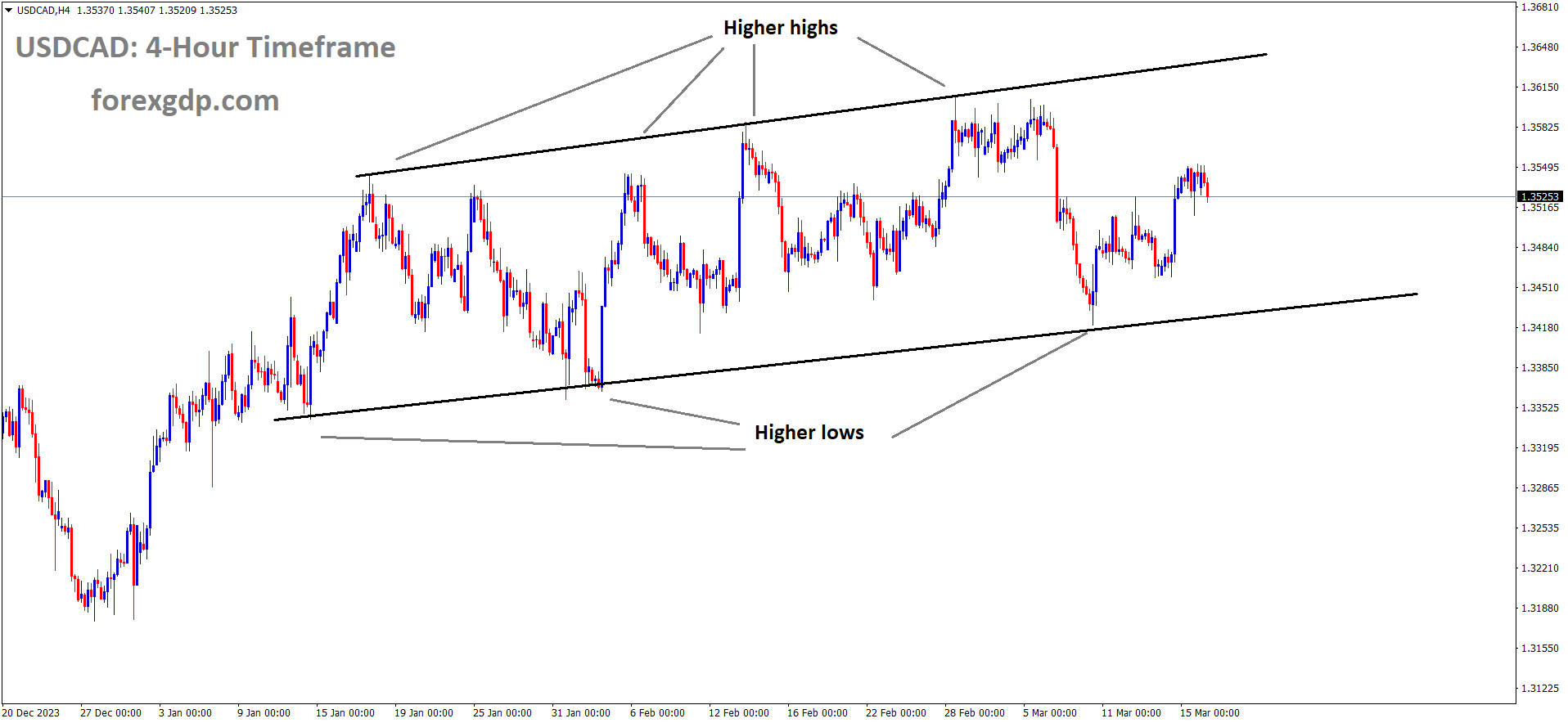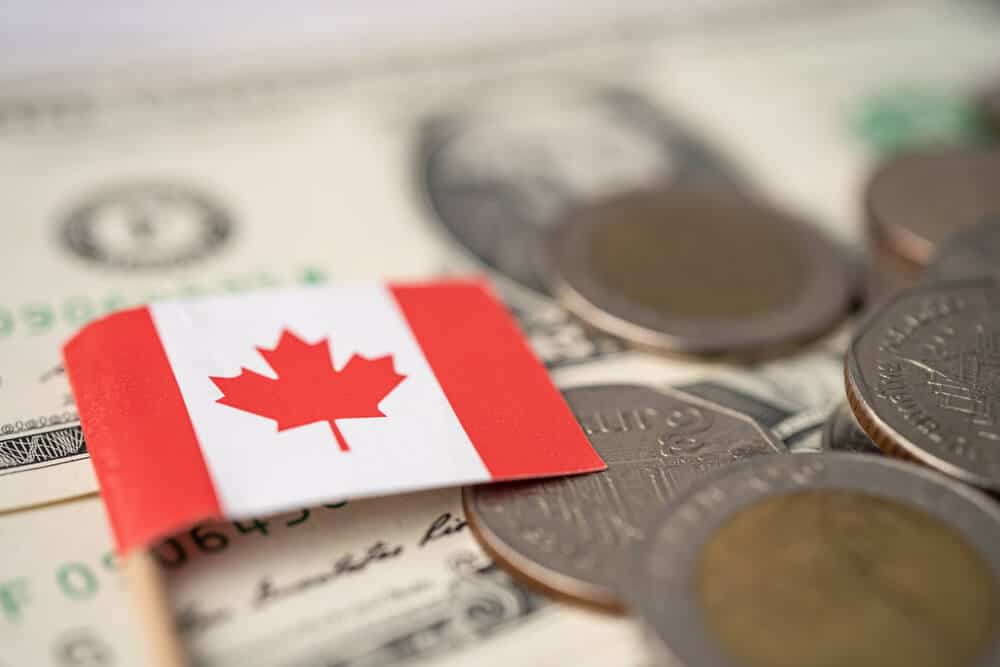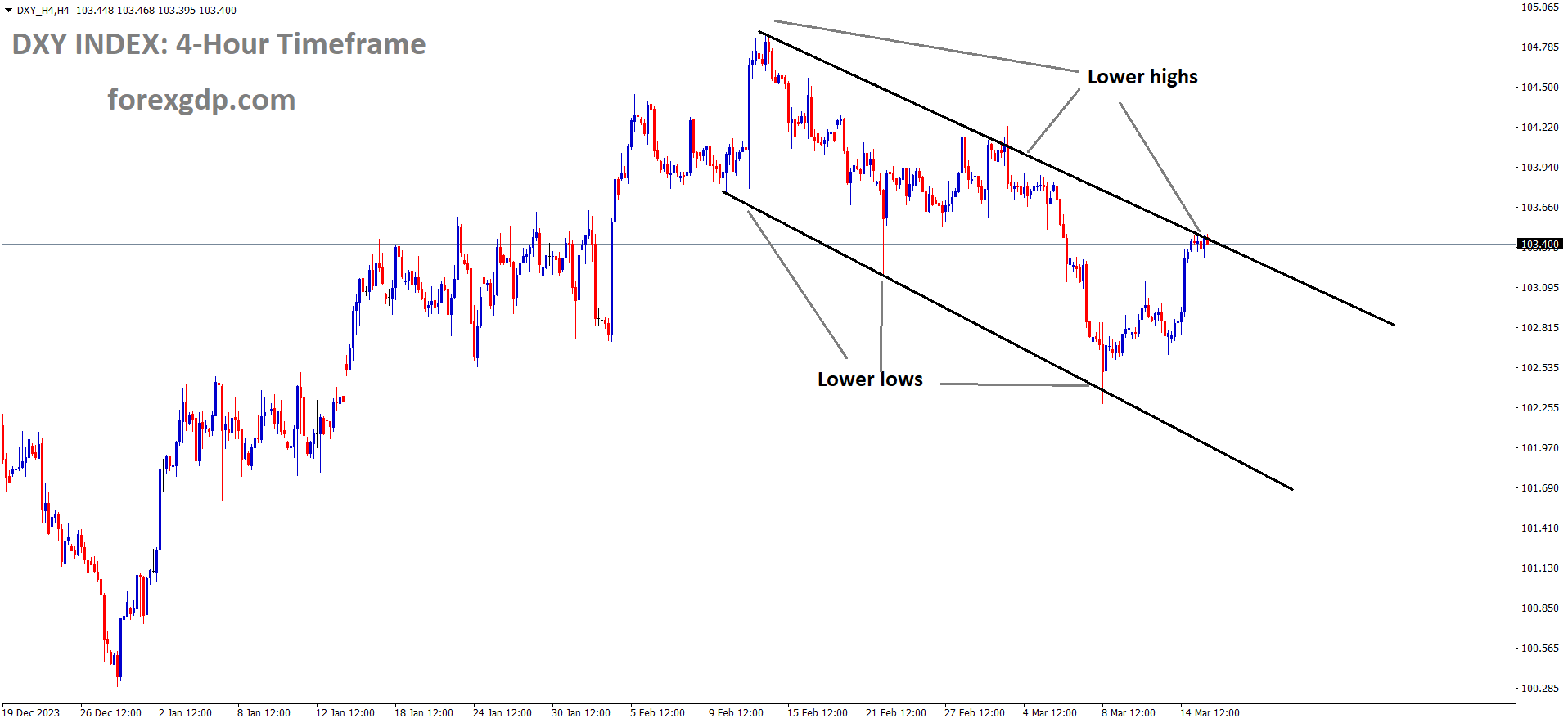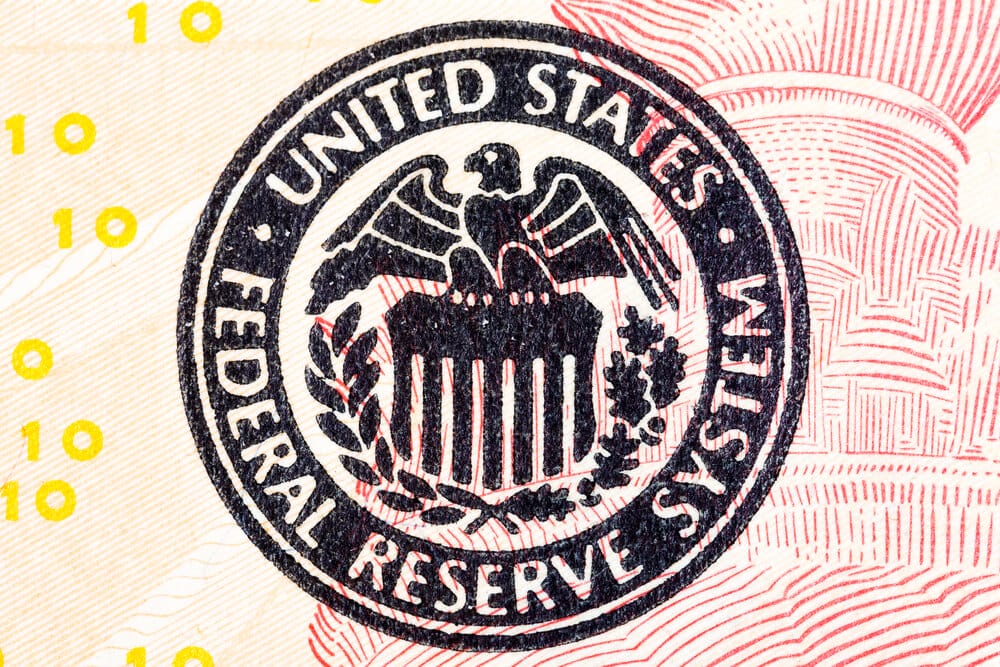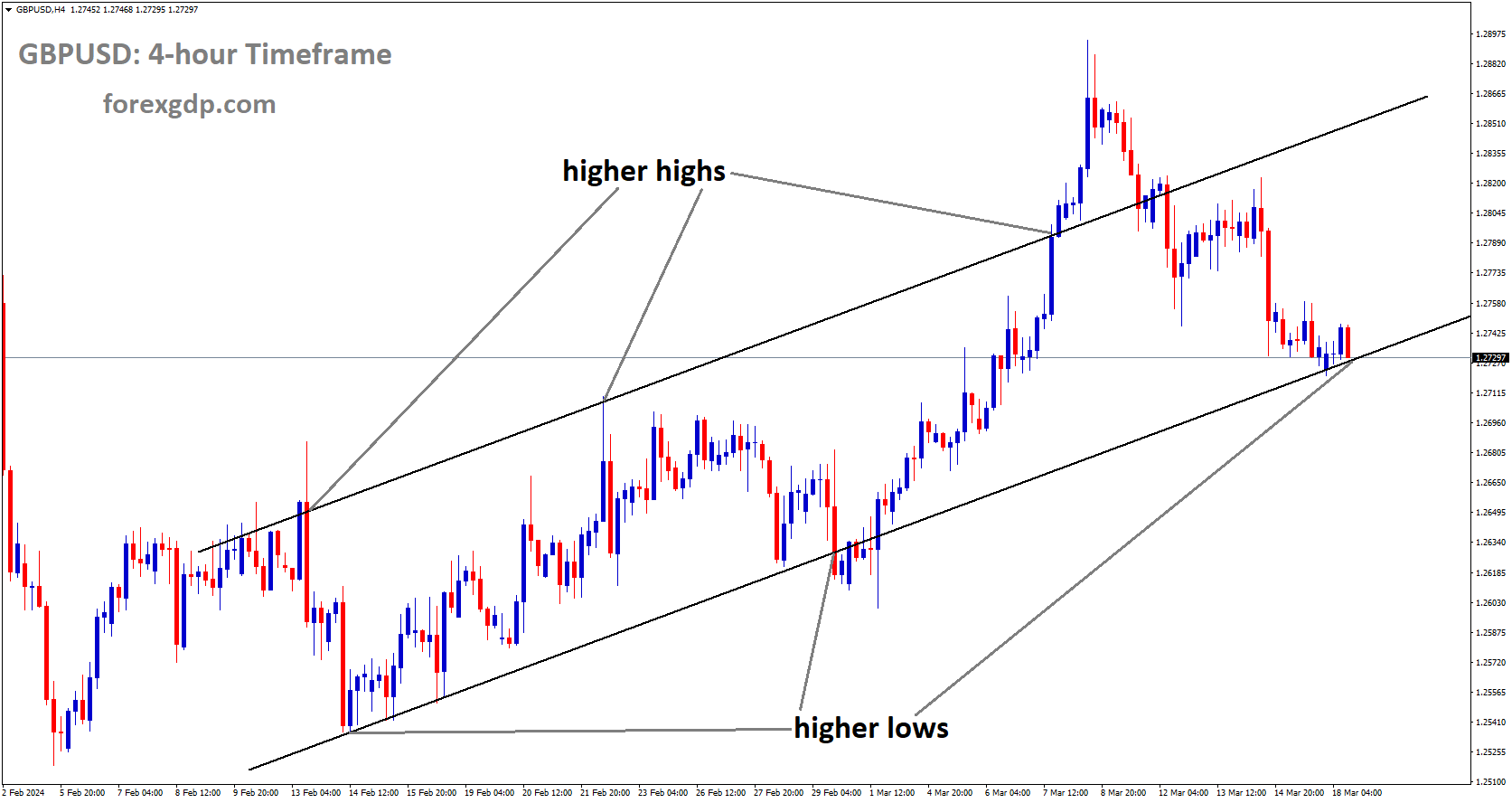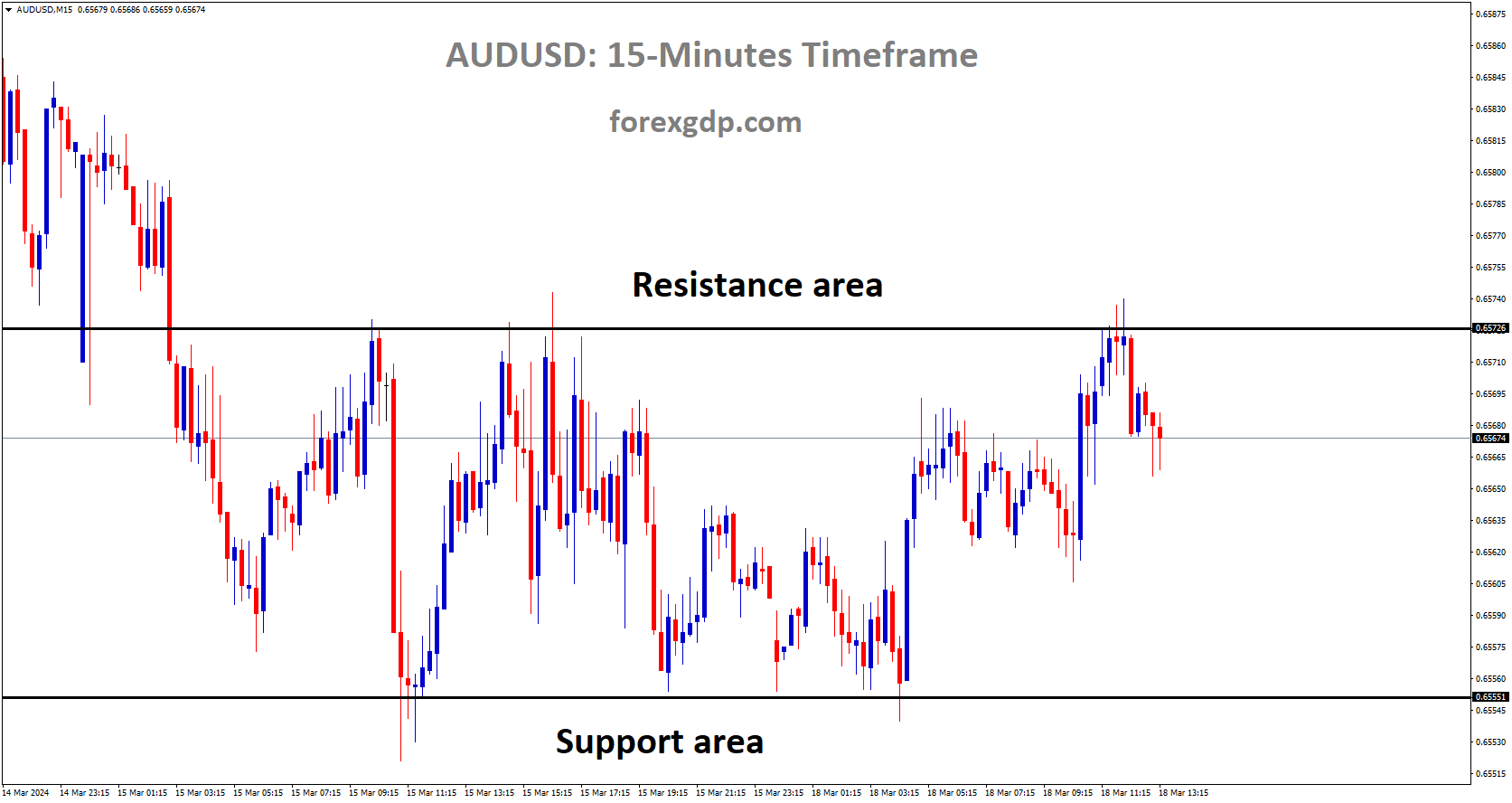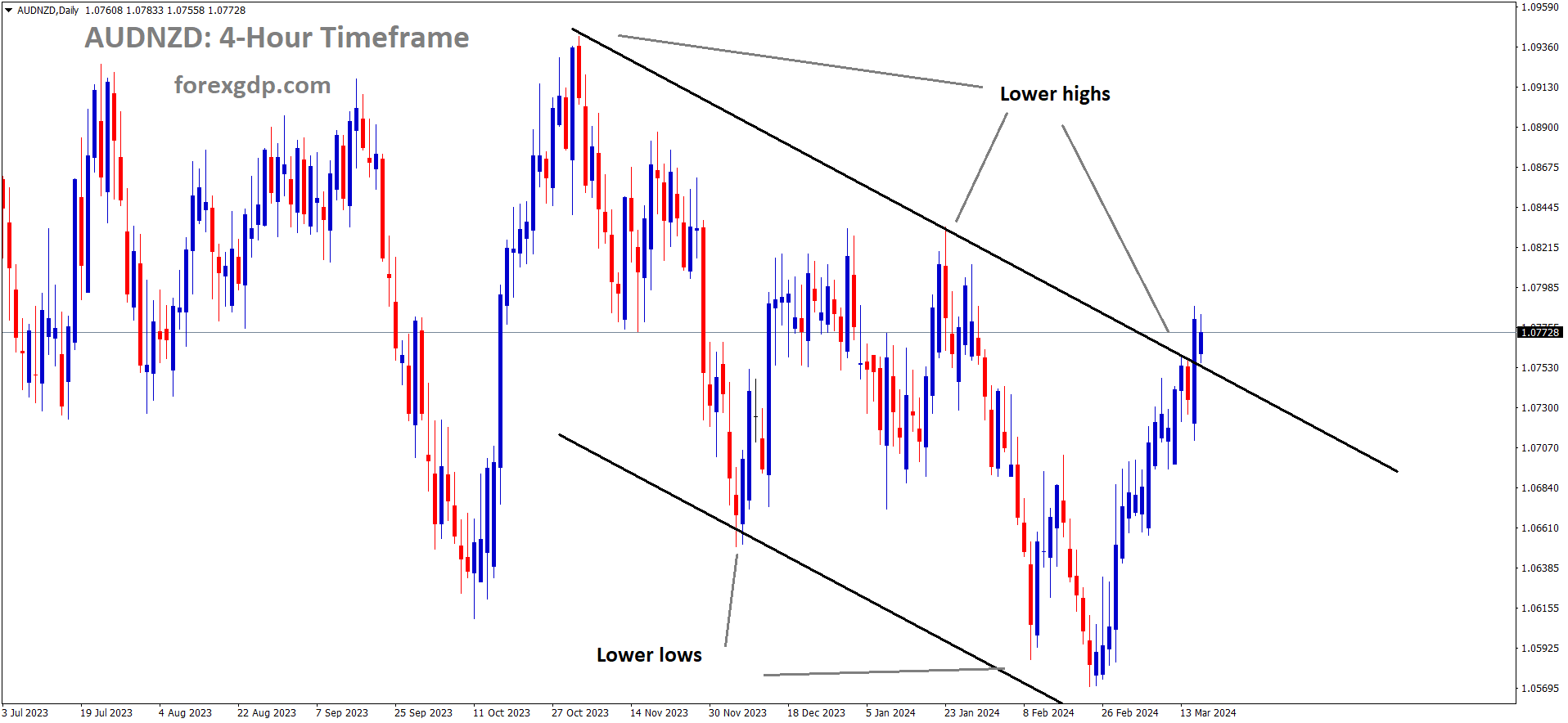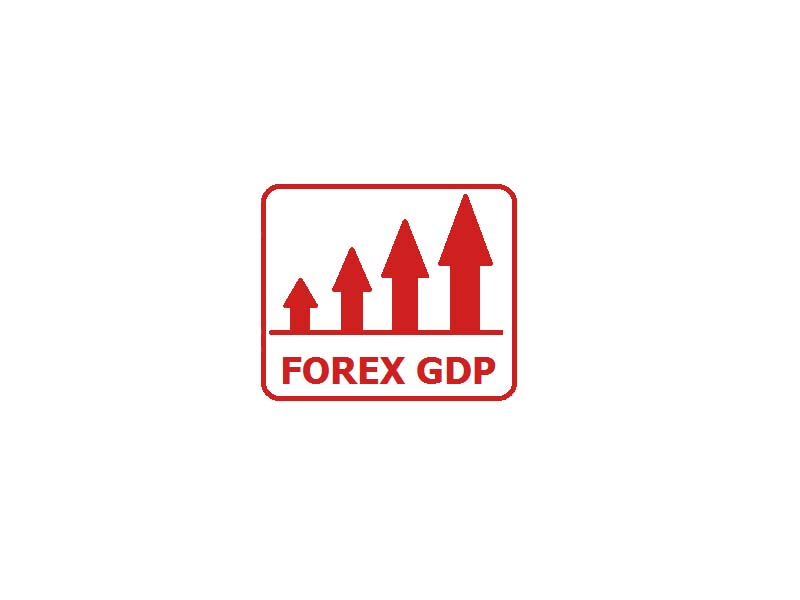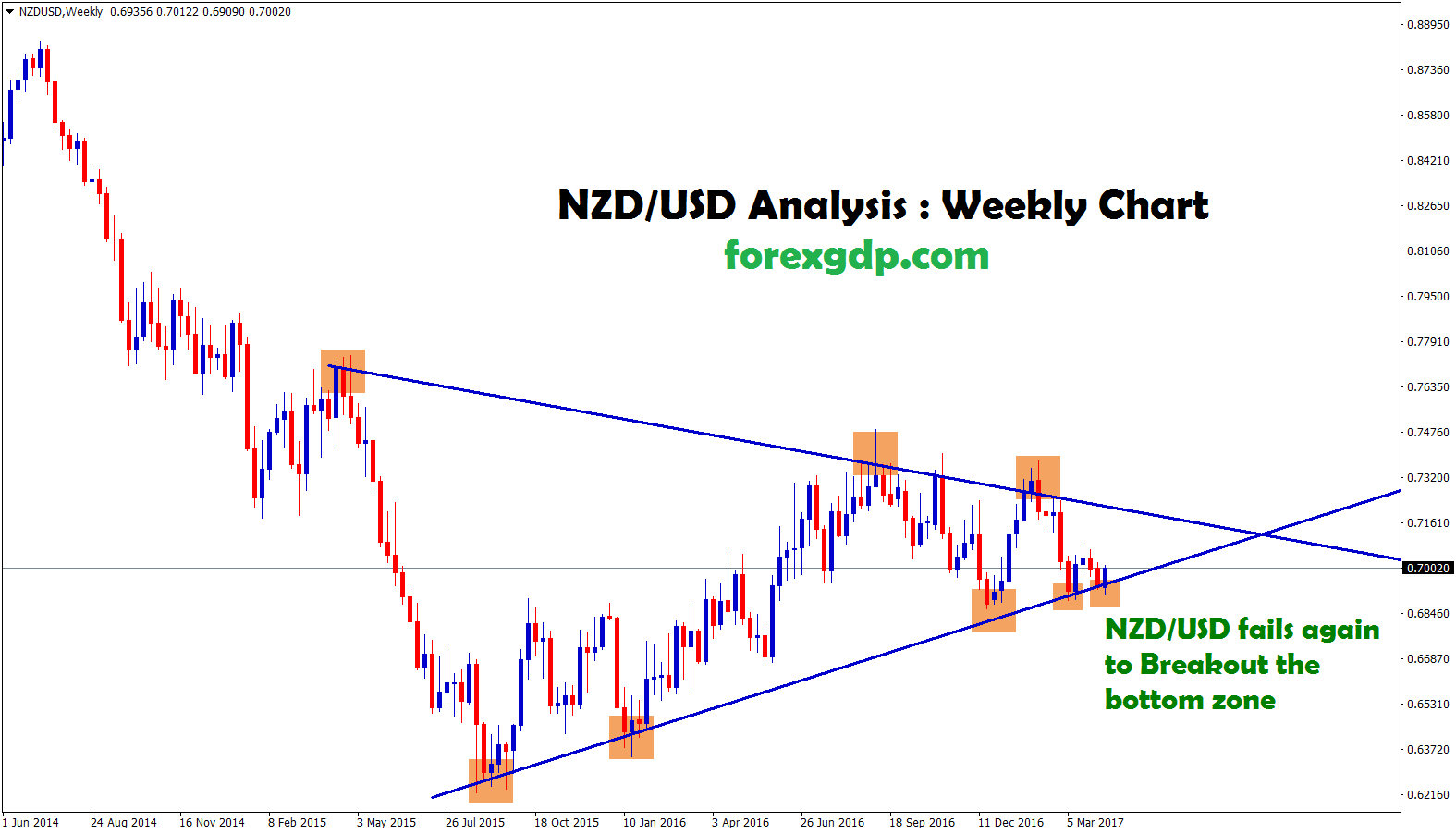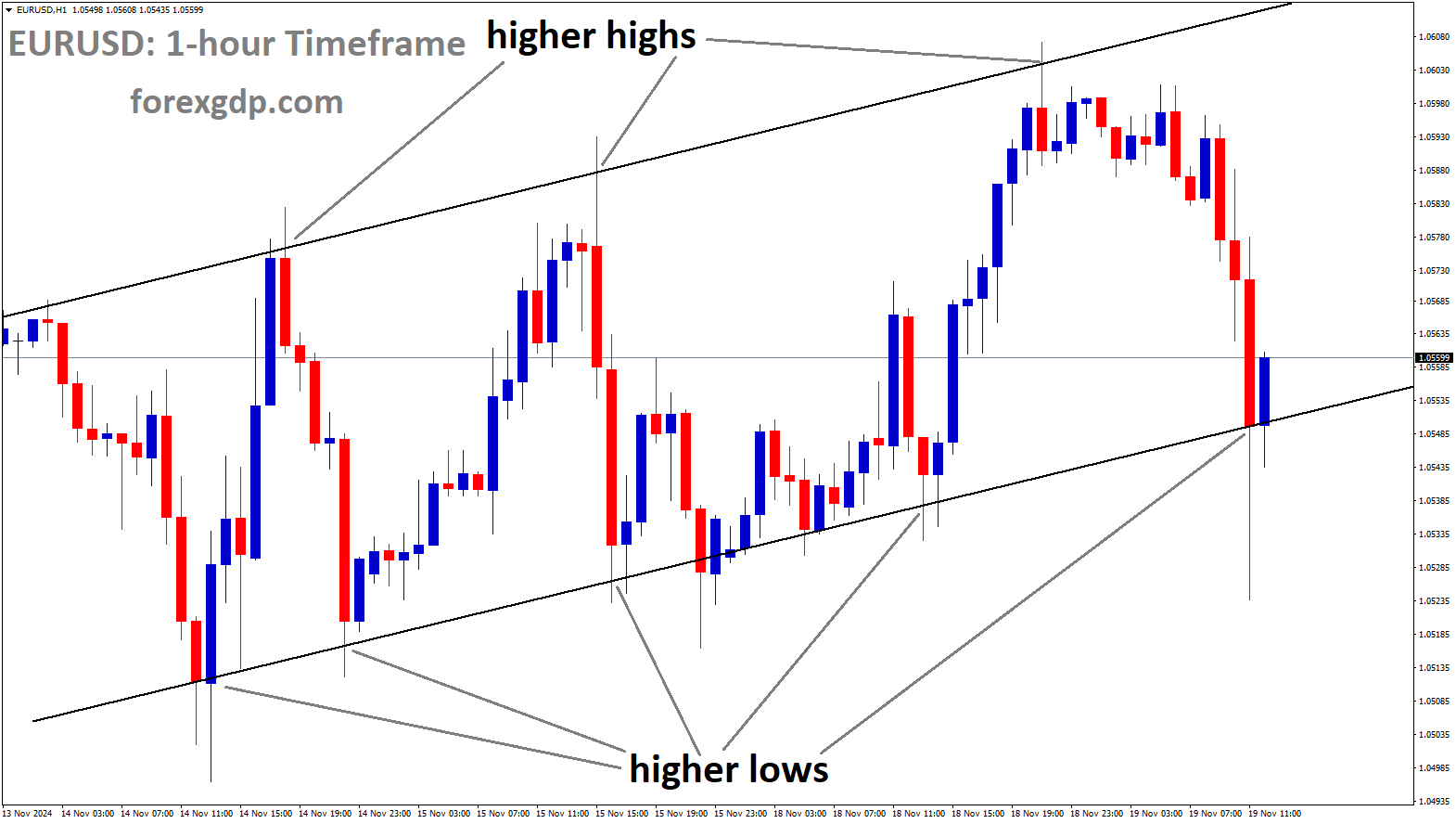XAUUSD Gold price is moving in the Descending triangle pattern and the market has rebounded from the support area of the pattern
XAUUSD – Gold Price Stays Below $2,150 Amid Lower Fed Rate Cut Expectations
The Gold prices are moving lowered due to FED rate cut bets in June is more expected than current month. ECB has to do first rate cut before FED is expected from Economists side. Recent US Domestic data showing strong growth in US Economy with increasing inflation rate.
Gold Price Holds below $2,150 amid Fed Rate Cut Expectations
Gold maintains a subdued stance below the $2,150 mark during the early European session, fueled by expectations of delayed Federal Reserve (Fed) interest rate cuts amidst persistent US inflation. Elevated US Treasury bond yields continue to bolster the US Dollar (USD), diverting investment away from the non-yielding precious metal.
Despite market anticipation of a potential rate-cutting cycle starting in June, cautious USD bulls restrain aggressive betting. This, coupled with geopolitical tensions, provides some support for gold prices, limiting further declines. Traders await cues from the upcoming two-day FOMC monetary policy meeting, scheduled for Wednesday, to gauge USD dynamics and prompt fresh market movements.
Recent US data highlighted inflationary pressures, potentially prompting the Fed to maintain higher interest rates, dampening gold’s appeal. The University of Michigan’s preliminary survey revealed steady one-year and five-year inflation expectations for March, while the US Consumer Sentiment Index dipped to 76.5.
According to the CME Group’s FedWatch Tool, the likelihood of an interest rate cut in June stands at approximately 60%, tempering bullish sentiment for the USD. Geopolitical tensions, including the ongoing Russia-Ukraine conflict and Middle East disputes, further bolster gold’s safe-haven appeal.
Last week, Ukraine intensified drone strikes on Russian oil refineries, while Israeli Prime Minister Benjamin Netanyahu confirmed plans to advance into Gaza’s Rafah enclave. Given these geopolitical uncertainties, traders are cautious about making significant directional bets, awaiting insights from the upcoming FOMC meeting for substantial market cues.
USDJPY – JPY Near One-Week Low Against USD, Eyes on BoJ and Fed
The Japanese Yen moving lower against USD after the Bank of Japan said they are going to buy 3 trillion worth of JGB Bonds in the market. This move makes disappointment of tightening measures in the economy. Still Ultra dovish measures moving in the economy makes JPY weakness persists in the Forex market against counter pairs.
USDJPY is moving in Ascending channel and market has reached higher low area of the channel
JPY Drops to One-Week Low Against USD on BoJ Uncertainty
The Japanese Yen (JPY) continues its descent against the US Dollar (USD) for the fifth consecutive day on Monday, reaching a one-and-half-week low. Expectations that the Bank of Japan’s (BoJ) accommodative monetary policy will persist contribute to this decline, with BoJ Governor Kazuo Ueda offering a cautious economic outlook last week. Additionally, the BoJ’s announcement of an unscheduled bond operation further undermines the JPY, facilitating the USD/JPY pair’s extension beyond the 149.00 mark.
However, positive outcomes from spring wage negotiations may prompt the BoJ to reconsider its negative interest rate policy in April, although USD demand remains subdued amidst uncertainty over the Federal Reserve’s (Fed) rate cut trajectory. Traders are awaiting the BoJ’s decision on Tuesday, followed by the outcome of the two-day FOMC policy meeting on Wednesday, which is expected to provide fresh directional cues.
Data released earlier this Monday revealed a larger-than-expected decline of 1.7% in Machinery Orders in Japan for January, further pressuring the JPY, albeit with limited downside potential. Japan’s Chief Cabinet Secretary Yoshimasa Hayashi anticipates the BoJ to collaborate closely with the government to sustainably achieve its price target, supported by wage increases.
Rengō, Japan’s largest trade union confederation, reported average wage demands exceeding 5%, suggesting a potential exit from the negative rates policy by the BoJ. Conversely, hotter-than-expected US producer and consumer price data from last week reduced expectations for aggressive policy easing by the Fed, lending support to the USD.
Investors are adopting a cautious stance, awaiting monetary policy updates from the BoJ and the Fed before determining the next move for the USD/JPY pair.
EURGBP – Edges Up Near 0.8550 Before Eurozone Consumer Prices
The ECB Governing council Member Francois villeroy De Galhau said ECB can do interest rate cuts in Spring month June is expected. ECB Policy Maker Pablo Hernandez De cos said that ECB keep rates at higher this month and expected to decrease the rate in June month if inflation is decreased. The Euro zone consumer prices and Trade balance is scheduled this week.
EURGBP is moving in Ascending channel and market has reached higher high area of the channel
Consumer Inflation Expectations Rise, BoE Rate Cut Speculation Grows
The Consumer Inflation Expectations, disclosed by the Bank of England (BoE) on Friday, saw a 3.0% increase, slightly lower than the previous uptick of 3.3%.
This softer inflation data has sparked market speculation about a potential Bank of England (BoE) rate cut in June, potentially weakening the Pound Sterling (GBP) and offering support for the EUR/GBP cross.
Meanwhile, the Rightmove House Price Index (MoM) for March surged by 1.5% on Monday, surpassing the previous increase of 0.9%. The annual report also demonstrated growth, rising by 0.8% compared to the previous 0.1%.
However, during its March meeting, the European Central Bank (ECB) kept borrowing costs at record highs, although policymakers hinted at discussions regarding a possible rate cut. This dovish stance from ECB officials may pose additional challenges for the Euro. François Villeroy de Galhau, an ECB policymaker, suggested the likelihood of a rate cut in the spring.
Furthermore, ECB policymaker Pablo Hernandez de Cos indicated on Sunday that the central bank had chosen to maintain borrowing costs at record highs this month. He also hinted at the possibility of interest rate cuts in June following a decline in Eurozone inflation.
Market attention on Monday will focus on the Eurozone Harmonized Index of Consumer Prices (HICP) and Trade Balance. Looking ahead to Tuesday, traders will closely monitor various market indicators from the United Kingdom (UK), including the Consumer Price Index, Producer Price Index.
EURAUD – China Enacts Proactive Fiscal Policy to Boost Economy
The China Government is implementing pro active fiscal expenditures to the economy to support economy growth to stable from currently unstable activity. Due to these reasons, Government buying local bonds, long term bonds purchasing programs are introduced. Australian exports will be favoured if china regained growth after this Fiscal expenditure steps.
EURAUD is moving in an Ascending channel and the market has fallen from the higher high area of the channel
China’s Finance Minister Lan Fo’an emphasized the significance of a proactive fiscal policy on Sunday to bolster the country’s economic recovery and support its growth objectives for the year, according to Bloomberg.
Key Points:
– “Emphasized the ministry’s dedication to following the directives of the Central Economic Work Conference and the detailed plans outlined in the Government Work Report.”
– “Highlighted the importance of maintaining a proactive fiscal policy.”
– “Emphasized the necessity of increasing fiscal spending.”
– “Stated that the Ministry of Finance (MOF) will utilize various policy tools, including deficits, special local bonds, and ultra-long-term special government bonds.”
USDCHF – Draws Sellers below 0.8550, Awaits Fed and SNB Rate Decisions
The Swiss Franc is moving lower against counter pairs ahead of SNB can do rate neutral in this week meeting. Israel Targets to Lebanon areas makes Geopolitical tensions in the Economy may be it can increase the use of Swiss Franc and US Dollar Safe Haven currencies. This week Swiss Trade balance data is scheduled and based on the Swiss Francs moves in the market.
USDCHF is moving in Ascending channel and market has rebounded from the higher low area of the channel
USD/CHF Slips Amid Dollar Consolidation; Eyes on Fed and SNB
During the early European session on Monday, the USD/CHF pair lost momentum as the US Dollar (USD) consolidated. Traders opted to stay on the sidelines ahead of the US Federal Open Market Committee’s (FOMC) monetary policy meeting on Wednesday, with expectations of no rate changes. Currently trading near 0.8535, the pair has dropped by 0.04% for the day.
The FOMC is expected to announce its interest rate decision on Wednesday, with investors anticipating rates to remain steady within the range of 5.25%–5.50% for March. Market sentiment leans towards a potential rate cut in July, with approximately 75% odds priced in, according to CME FedWatch Tools. However, the prevailing narrative of higher interest rates in the US could bolster the Greenback and provide support for the USD/CHF pair in the short term.
Regarding recent data, the University of Michigan reported a decline in the Consumer Sentiment Index to 76.5 in March, slightly below expectations. However, one-year and five-year inflation expectations remained unchanged at 3.0% and 2.9%, respectively. Industrial Production in February rose by 0.1% month-on-month, rebounding from a 0.5% decline in January.
On the geopolitical front, Israeli warplanes conducted airstrikes in southern Lebanon on Sunday, escalating tensions in the Middle East. Hezbollah claimed to have targeted Israeli soldiers near the village of Wazzani, further heightening tensions. Such geopolitical unrest could drive investors towards safe-haven assets like the Swiss Franc (CHF) and limit the upside potential of the USD/CHF pair.
Looking ahead, the Swiss National Bank (SNB) is expected to keep interest rates unchanged on Thursday, although Bloomberg economists predict a rate cut as early as June. Tuesday will see the release of the Swiss Trade Balance for February, followed by the FOMC rate decision on Wednesday, and the SNB interest rate decision on Thursday. These events are likely to provide clarity and direction for the USD/CHF pair.
USDCAD – Edges Up Near 1.3540, Eyes Canadian CPI and Fed Policy
The Canadian Dollar moved higher against counter pairs after the Crude oil prices moving in a favour for Canadian Dollar . This week February month CPI data is scheduled and higher reading will drive the Canadian Dollar in higher pace.
USDCAD is moving in an Ascending channel and the market has rebounded from the higher low area of the channel
The US Dollar (USD) is expected to receive support from the Federal Reserve (Fed)’s commitment to maintaining higher interest rates to combat inflation, potentially curbing significant downside for the USD/CAD pair. The Fed is also scheduled to update its Dot Plot projection, outlining interest rate expectations for the next one to five years.
Meanwhile, the US Dollar Index (DXY) struggles to maintain its position in positive territory, hovering around 103.50 at the time of writing. However, downward pressure on the US Dollar is evident due to a correction in US Treasury yields, with the 2-year and 10-year US Treasury yields currently standing at 4.72% and 4.30%, respectively.
On the other hand, the Canadian Dollar (CAD) may find support from the surge in crude oil prices, with West Texas Intermediate (WTI) oil prices continuing their upward climb, nearing $80.90 per barrel at the time of writing. The positive momentum in crude oil prices is driven by concerns over supply disruptions due to heightened geopolitical risks.
Traders are anticipating the release of Canadian Consumer Price Index (CPI) data scheduled for Tuesday, with expectations suggesting a year-over-year increase in consumer prices for February. A higher CPI reading could contribute to a bullish sentiment for the Loonie Dollar (CAD). Additionally, the US Manufacturing Purchasing Managers Index (PMI) is set to be released on Thursday.
USD INDEX – USD Sees Slight Gains Ahead of Fed Decision
The Michigan consumer sentiment index reading came at 76.5 (February month) from 76.9 in January month. Inflation expectations eased to 2.9% in US. The most probability of FED decision is rate neutral in this week meeting. So US Dollar moved higher against counter pairs after the Industrial production up by 0.10% from -0.50%. in February month.
USD Index is moving in the Descending channel and the market has reached the lower high area of the channel
US Dollar Poised for Recovery Ahead of Fed Decision
Strong economic indicators and Fed’s cautious stance hint at potential USD recovery. Attention shifts to updated FOMC forecast next week, likely to influence USD further.
Despite persistent US inflation, timing of easing cycle hinges on incoming data, expectedly in June. Market awaits FOMC Dot Plot for recalibration.
Market Recap:
– University of Michigan reports March Consumer Expectations at 74.6, down from previous 75.2.
– March Consumer Sentiment dips to 76.5 from 76.9.
– 5-Year Inflation Expectations hold steady at 2.9%.
– February’s Industrial Production improves to 0.1% from -0.5%.
– US Treasury yields rise: 2-year at 4.71%, 5-year at 4.13%, and 10-year at 4.29%.
– Fed not expected to cut rates next week, focus on its guidance for a smooth economic transition. Probability of May cut at 10%, June at 65%.
– Market awaits clarity on Fed’s vision for 2024 cuts.
GBPUSD – Stabilizes at 1.2730 Before Fed Decision
The GBP Pairs moving lower ahead of BoE meeting is scheduled this week, inflation expectations is lowered to 3.0% in February from 3.3% in January month by Public makes BoE to do rate cut in June month is more expected.The Right move Housing price index numbers came at 1.5% from 0.90% in January month.
GBPUSD is moving in Ascending channel and market has reached higher low area of the channel
However, caution prevailed in the market ahead of the US Federal Reserve’s interest rate decision on Wednesday, leading to setbacks for the pair.
The US Dollar Index (DXY) gained momentum due to the increase in US Treasury yields on Friday, driven by a hawkish sentiment surrounding the Federal Reserve expected to maintain heightened interest rates amid recent inflationary pressures. However, a subsequent retreat in US yields weighed on the US Dollar (USD) at the time of writing.
According to the CME FedWatch Tool, the probability of a rate cut in March is currently at 1.0%, with reduced expectations for May at 6.1%. The likelihood of a rate cut in June and July stands lower at 56.3% and 75.2%, respectively.
Friday saw the preliminary US Michigan Consumer Sentiment Index for March decline to 76.5, contrasting with expectations for stability. Meanwhile, Industrial Production (MoM) in February surpassed expectations with a 0.1% increase, rebounding from the previous month’s 0.5% decline.
On the other hand, Consumer Inflation Expectations released by the Bank of England (BoE) showed a decrease to 3.0% from the previous uptick of 3.3%, prompting markets to increase bets on a BoE rate cut in June. This potentially weakened the Pound Sterling (GBP) and pressured the GBP/USD pair downward.
Monday’s Rightmove House Price Index (MoM) for March surged by 1.5%, exceeding the previous rise of 0.9%. Additionally, the annual index saw an increase of 0.8% compared to the previous 0.1%. Traders are set to closely monitor various market indicators from the United Kingdom (UK) on Tuesday, including the Consumer Price Index, Producer Price Index, and Retail Price Index.
AUDUSD – Holds Steady Amid Weak USD, ASX 200 Index
The Australian Dollar moved flat ahead of RBA meeting scheduled tomorrow, RBA Governor Michelle Bullock said inflation is demand driven, it is based on labour market growth and wage inflation rate. Recently economic data like Retail sales and industrial production increased in February month, So RBA may be hold the cash rates at 4.35% in this meeting is more expected.
AUDUSD is moving in box pattern and market has fallen from the resistance area of the pattern
AUD Rebounds; Caution Ahead of RBA, PBoC, and Fed
The Australian Dollar (AUD) breaks its losing streak on Monday, with the AUD/USD pair finding support as the US Dollar (USD) retraces amid lower US Treasury yields. However, caution looms ahead of the Reserve Bank of Australia’s (RBA) policy decision scheduled for Tuesday, along with interest rate announcements from both the People’s Bank of China (PBoC) and the US Federal Reserve (Fed) expected on Wednesday.
Pressure on the Australian Dollar may have been exacerbated as the S&P/ASX 200 Index extends its decline for the third consecutive session, particularly driven by losses in mining and energy stocks due to softer commodity prices. Meanwhile, Australia braces for severe Tropical Cyclone Megan, prompting evacuations and closure of a major manganese mine.
Amid market confusion surrounding the Federal Reserve’s stance on interest rates in response to recent inflation pressure, the US Dollar Index (DXY) loses ground. Traders are expected to monitor US housing data on Tuesday for further insights.
Recent developments suggest that the RBA may maintain its cash rate at 4.35%, with inflation attributed to domestic factors such as labor market strength and wage inflation, according to RBA Governor Michele Bullock. China’s economic indicators show resilience, with Retail Sales and Industrial Production beating expectations in February.
Probability of a rate cut by the Fed in March remains low at 1.0%, while expectations for May, June, and July are at 6.1%, 56.3%, and 75.2%, respectively. US economic data, including the Michigan Consumer Sentiment Index, Industrial Production, and Producer Price Index, indicate mixed signals for the economy.
In summary, market focus remains on central bank decisions and economic data releases, which could influence further market movements and the direction of the AUD/USD pair.
AUDNZD – NZ PM Luxon: Economic Deterioration
NZ PM Christopher Luxon said New Zealand Economy is declining in the following conditions. NZ Business confidence data come today for February report is 53.0 against 52.2 in January month report. NZ Dollar moved down after the NZ PM remark on the outlook of the economy.
AUDNZD is moving in the Descending channel and the market has reached the lower high area of the channel
On Monday, New Zealand’s Prime Minister Christopher Luxon remarked that he has observed a decline in economic conditions within the country. This observation comes in light of the Business Performance of Services Index (PSI) for February showing a marginal improvement to 53.0, compared to January’s reading of 52.2.
Don’t trade all the time, trade forex only at the confirmed trade setups.
Get more confirmed trade setups here: forexgdp.com/buy/

